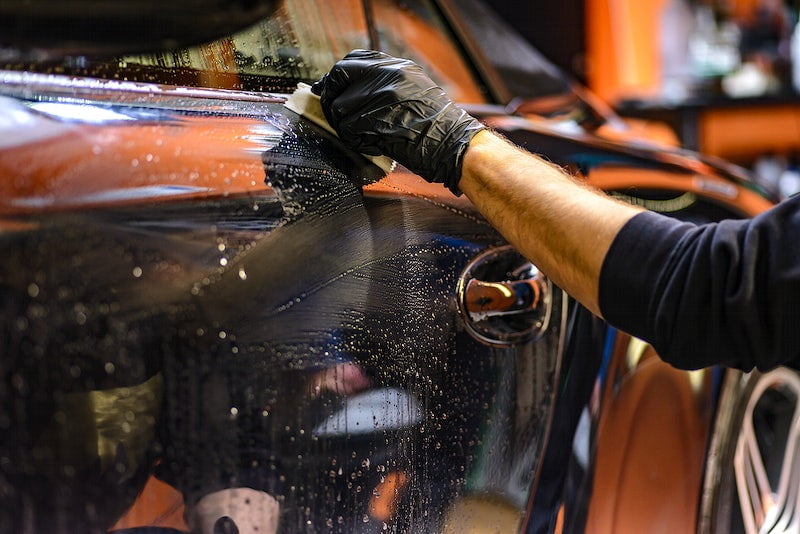If you’re like most people, you probably don’t give much thought to the difference between interior and exterior car detailing. After all, what’s the difference, right? Well, as it turns out, there is a difference – and knowing what’s what helps you make a more informed decision about which type of detailing service to choose for your vehicle.
In order for you to choose the kind of service that best suits your needs, we will explore the differences between interior and exterior automobile detailing in this article.
Interior Car Detailing
Interior car detailing involves much more than simply cleaning the inside of your car. In fact, it is a comprehensive process that includes everything from vacuuming and shampooing the upholstery to cleaning and polishing all of the hard surfaces inside your vehicle. All of the nooks and crannies in your car’s interior will be cleaned and detailed, leaving no stone unturned.
Depending on the car detailer you go to, what you can expect from getting your car detailed might vary. This is the common procedure for interior automobile detailing:
- Vacuuming – Cleaning a car’s interior starts with detail vacuuming the seats, carpets, mats, trunk, and shelves. To maximize the benefits of cleaning, floor mats should be cleaned separately. Also, an air compressor can be utilized to access challenging locations that are inaccessible with a vacuum. Unlike general car cleaning, detailed vacuum cleaning must be thorough. Therefore, it would take a detailer approximately an hour to detail vacuum the car depending on the interior condition.
- Shampoo and brush cleaning – In this step, the focus is predominantly on the upholstery and rugs. The seats, carpets, and mats are sprayed with upholstery cleaning chemicals and scrubbed thoroughly to get rid of any stains, dirt, and imperfections that may have built up over the years. Then all the dirty water is extracted using the shampoo machine and this process is repeated as needed. Shampoo cleaning is very efficient in removing deep dirt. To prevent mildew, the interior should be allowed to dry thoroughly.
- Leather treatment – All the leather components are cleaned and treated using a leather cleanser. A moist towel is used to wipe away the surplus residue from the soapy surfaces. After the cleaning process, it is treated with a leather conditioner made specifically for it.
- Interior glass cleaning – A glass cleaner is used to shine the glass. This keeps the glass gleaming and ensures that the driver’s view is not obstructed.
- Re-vacuuming and wiping – After vacuuming, it’s crucial to re-vacuum, to ensure that there is no more dirt left in the cabin’s interior. Windows and dashboards should be cleaned using a clean cloth and cleaning detergent. A car’s original lustre is recovered once all of this is finished.
- Spraying perfume – Finally, deodorant is applied inside the automobile to leave it smelling fresh.
Exterior car detailing
Exterior car detailing, on the other hand, focuses primarily on the outer appearance of your vehicle. This includes everything from washing and waxing the body to cleaning the wheels and tyres. Basically, What is visible on the outside of your car will be cleaned and detailed during an exterior detail session.
Your first thought when considering exterior detailing might be a car getting waxed. Waxing is frequently viewed as a more thorough automobile wash that reduces surface abrasions and offers a paint sealant.
Here are a few additional services you can anticipate from the car detailers;
- Washing – At this stage, your car’s exterior surfaces will get a deep wash with powerful chemicals including the paintwork, tyres, wheels, and glasses.
- Claying – After the washing process there will be still some bonded contaminants left on the paintwork. This must be removed before we get to the polishing stage, so to remove these contaminants and debris from your car’s paint surface our detailers would use a clay bar with appropriate chemicals. This will ensure the paint surface is smooth, clean and ready for the polishing stage.
- Cut and Polishing – Polishing or Cut and polish is the most important step in exterior detailing, the top layer of the paint (clear coat) will have lots of imperfections ex: scratches swirl marks and oxidation. Because of these elements, the car’s exterior will look very old. By cutting through this dead layer of paint using the appropriate tools and chemicals, detailers can remove most of the light scratches and bring back the shine of the exterior. The car will look much newer once this step is done
- Sealing – Your car will have a more glossy finish after sealing. Waxing can be used to give your car a final polish and restore it to near-new condition.
- Exterior Glass clean and Tyre shine – Once the polishing step is finished, the glasses will be cleaned and tyres will be shined, so it will give that new car look.
So, now that you know the difference between interior and exterior car detailing, which one should you choose for your vehicle? Well, that depends on a few factors. For instance, if you are simply looking to have your car’s interior cleaned and refreshed, then an interior detail would be ideal. However, if you are looking to give your car’s exterior a complete makeover then an exterior detail would be the better choice.
No matter which type of detailing service you choose, one thing is for sure: your car will look and feel amazing when you’re finished!

